Does your Instagram grid still matter?
Life in a 4:5 aspect ratio.
This issue of PHONE TIME includes: a short history of the Instagram grid and a look at whether it still matters, featuring thoughts from social media manager Bonnie Azoulay and pop culture creator Hannah Zook. Plus, a recap of NEW INC’S DEMO2025.
It was a social media horror story. Reddit threads were in chaos, grievances were being aired on X, and Instagram comment sections were flooded. The problem? The Instagram grid had changed.
If there’s one thing I love to analyze, it’s an Instagram grid. When I started making TikToks about internet culture three years ago, I created a series called “Instagram Evolution,” where I would scroll through a brand or company’s grid from top to bottom, unpacking how its aesthetics, messaging, color palette, and overall vibe had evolved over time.
When Instagram changed the grid from a square 1:1 to a vertical 4:5 format earlier this year, after limited testing in late 2024, I returned to thinking about all things grid. Not just analytically, but personally. My own posts, which I had carefully cropped and arranged, were suddenly all out of sorts. I complained about the change to anyone who would listen.
In a post addressing the backlash to the change on Jan. 19, Adam Mosseri, head of Instagram, wrote:
“We started with the tall grid because most photos and videos that are uploaded to Instagram at this point are vertical and rectangles do a better job showing off those photos and videos, but I know some of you spend a lot of time tweaking your grids and this blew all of that up, so we’re going to improve the ability to customize those thumbnails…”
He added that Instagram would be experimenting with additional platform changes, including moving Highlights into the grid and letting creators re-order their grids and post directly to the grid while bypassing the feed.
The new direction is confusing. Not unlike Meta’s attempt to recreate the “OG Facebook,” these updates feel like Instagram trying to dig itself out of a hole—to reverse-engineer a user experience that has long been dead, largely because of the platform’s own decisions.
Instagram users both old and new are finding themselves frustrated and confused. “‘I know some of you really like your square photos’ is also just such a condescending way to describe the countless hours of work some people put into making their grid seamless and cohesive,” one Reddit user commented, referring to Mosseri’s response.
As Instagram continues piling on new features, including broadcast channels, music on posts, and AI integrations, does it still matter what your grid looks like?
Here’s an incomplete history of the Instagram grid and a stab at the question of what’s next.
Life in square
The square has long been a defining feature of Instagram since the platform launched in 2010. In fact, early users were limited to square posts.
“As with many elements of early Instagram, the square had its analogue in an older, somewhat fetishized photographic culture: Polaroids, instant-printed photographs with plenty of white space under the square image to annotate if so desired,” write researchers Tama Leaver, Tim Highfield, and Crystal Abidin in their book “Instagram: Visual Social Media Cultures.”
Squares, rectangles, oh my!
Soon enough, users were no longer stuck with square posts. In 2013, Instagram introduced a video feature, allowing users to record up to 15 seconds and prompting discussions of whether it might be a Vine killer.
“The initial magic of Instagram was not that it allowed you to stumble into beautiful, nostalgia-laced photography through the use of filters (Hipstamatic did that first). It’s that it made the process of capturing and sharing those types of photos fast and easy,” Adrian Covert wrote in CNNMoney at the time. “The additional time and effort needed for creating and consuming video could diminish some of the magic that Instagram has been so good at providing.”
The feature let users choose a still from the video to serve as a cover photo on their grid.
In 2015, as Liz Stinson put it in WIRED, “Rejoice: The iron-fisted reign of the square is dead.” Instagram would now enable portrait and landscape photos and videos. Up to this point, many had been resorting to third-party apps to add borders and avoid cropping.
The Reels era
In August 2020, Instagram announced Reels as “a new way to create and discover short, entertaining videos on Instagram”—an obvious attempt to compete with TikTok, if ever there was one.
Over the past few years, the increasing emphasis on vertical video has sparked what I can only describe as an identity crisis. Trends like “casual posting,” photo dumps, and a growing preference for Stories over grid posts have reflected changing norms on the platform. Some have opted to archive or delete their posts entirely. In 2022, backlash peaked when a call to “Make Instagram Instagram Again” was shared by Kylie Jenner and Kim Kardashian.

Despite the backlash, Instagram has continued emphasizing vertical video. Far from being just a TikTok clone, Reels have become a cultural phenomenon in their own right. The Reels algorithm has inspired the phrase “mythical Reel pull,” which Katie Notopoulos defines as “when an algorithm serves up a weird and surprising video—something so strange you can't believe you're seeing it, as if you're not supposed to see it.”
The new grid and what’s next
This brings us back to January 2025, when Instagram rolled out its grid change—switching the grid from squares, as they had long been, to rectangles. The change upset many users who had intentionally cropped their images for a square grid and now found their posts misaligned. The new grid displays fewer posts when you click on someone’s profile.
While the importance of a grid aesthetic is frequently debated, especially within branding, the update prompted many to revisit its value.
I emailed Bonnie Azoulay, a social media manager and SEO copywriter behind @wordofmouthcontent, to get her thoughts. “I think aesthetics will always matter to an extent” on Instagram, she said, especially in comparison to TikTok.
Azoulay added that a nice-looking grid helps attract users who come across your account on Instagram’s Explore page, creating a good first impression. “You need a pretty grid or at least something that matches your brand identity (colors, fonts, etc.) when you’re trying to grow an audience,” she said. “Those that have grown a following already don’t have to continue sticking to ‘the grid’ aesthetic.”
She also drew a distinction between personal and brand accounts: “Personal brands and influencers can get away with not being aesthetically pleasing, whereas brands should stick to a brand identity with their grid.”
Q&A with Hannah Zook, @hannahzookpop, about the future of Instagram aesthetics and the grid
I also chatted with Hannah Zook, who covers pop culture in depth on TikTok. Zook has a series called “Personal vs. Promotional,” in which she does deep dives on the Instagrams of different celebrities. She analyzes how they balance personal versus promotional content, like brand deals or upcoming projects. The series has covered over 60 celebrities across industries, including Emma Chamberlain, Hailey Bieber, Dominic Fike, Bella Hadid, and Zendaya. This interview has been edited for clarity and length.
How do you think about the divide between personal and promotional?
Within the context of celebrities now, I think it’s a bit different than even two or three years ago. I think the veil of authenticity has shifted—we’re too self-aware to be tricked by more personal photos. Not to say that people don’t share them or that they come across as inauthentic, but I think celebrities who don’t want to share personal content just don’t feel the pressure anymore.
How much do you think the look of the Instagram grid matters for celebrities’ or influencers’ brands and relevance? Is there a difference between Gen Z and celebrities of other generations?
I think it’s less about the aesthetic of the grid and more about the aesthetic of the individual post. I still think aesthetics matter at the end of the day, but I don’t think people are trying to match their grid up in any sort of way.
I was looking at Gen X celebrities—Viola Davis, Drew Barrymore, Reese Witherspoon—and they’re posting a lot more Reels than Gen Z, which I think is interesting. Doechii for example, posts a ton of Reels, so there’s always an exception to the rule. But I do think that Gen Z still prioritizes photos.
Yeah. I’m thinking of Emma Chamberlain, who maybe didn’t used to post many Reels, but has a lot more recently. Or people with media projects, like Alex Cooper—she posts podcast clips.
Emma Chamberlain’s an interesting example, because it seems like she’s trying to build an aesthetic with her Reels, which I don’t think many people have done yet. The Reels that are like art, or the stop motion things she does for Chamberlain Coffee, or the “get ready with me” outfit videos.
I do think for celebrity brands the aesthetics are still really strong. Like Chamberlain Coffee or Bella Hadid’s Kin Euphorics. It seems that brands have their own set of aesthetic rules that they go by.
100%. They still exist within that 2019, 2020 rule. The grid does need to have some sense to it. And that doesn’t mean super clean, but I think it means a color palette.

It’ll be interesting to see how that evolves within the next few years. I’m looking at Selena Gomez’s Rare Beauty right now, and I love their branding. But it almost feels like in three years, it won’t work anymore.
DEMO2025 showcases the best of art, code, and technology

Last weekend concluded DEMO2025, “NEW INC’s annual festival celebrating explorations in art, design, and technology.” During the opening program, held from June 4–6, NEW INC members gave talks about their work across five tracks: Art & Code, Cooperative Studies, Creative Science, Extended Realities, and Social Architecture.

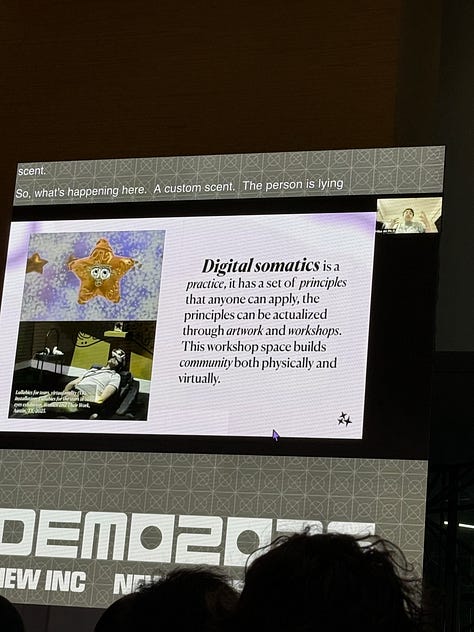
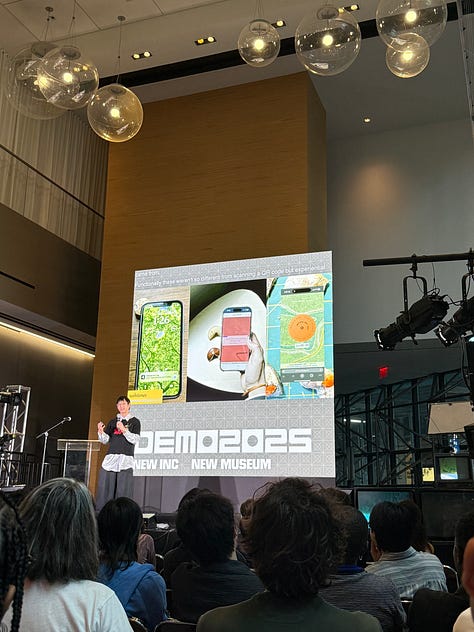
Showcases from the different tracks ran from June 4-22, with installations spanning sound, sculpture, video, virtual reality, and mixed media.
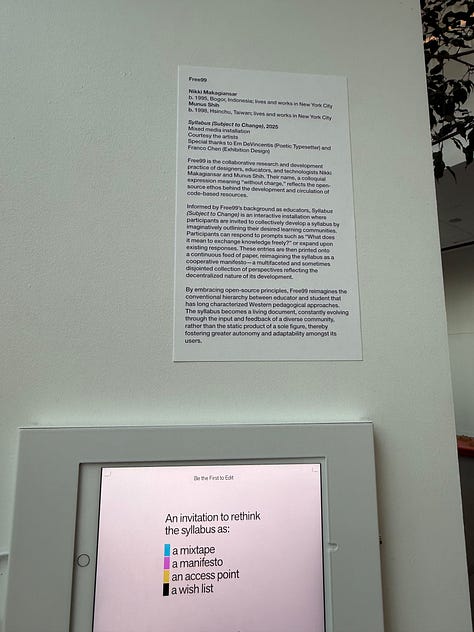
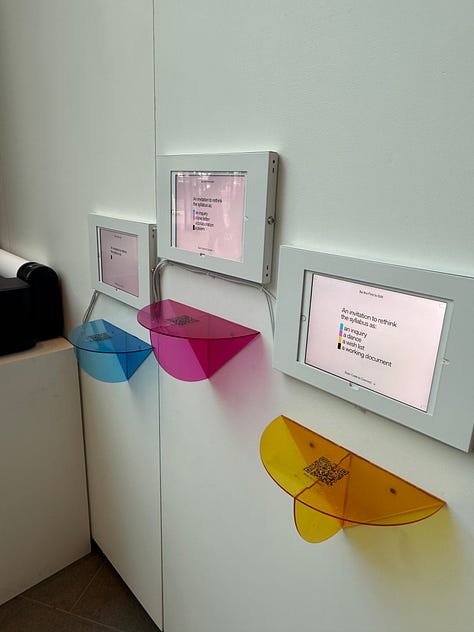

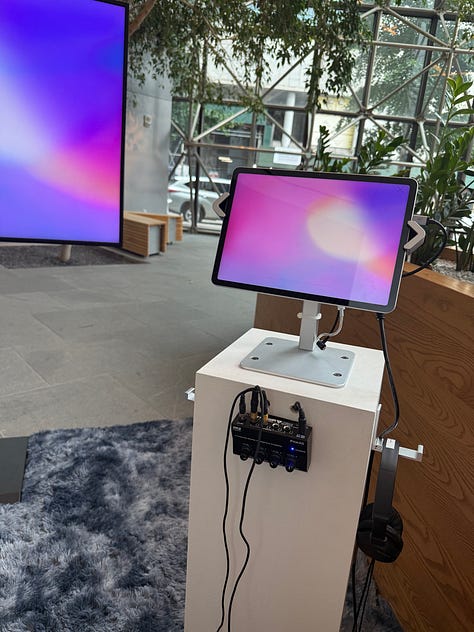

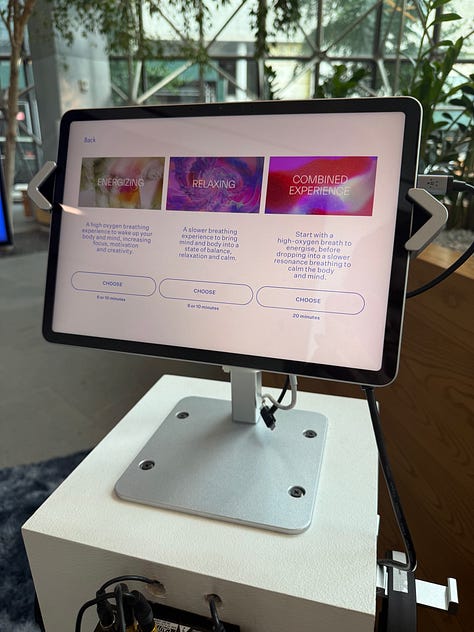
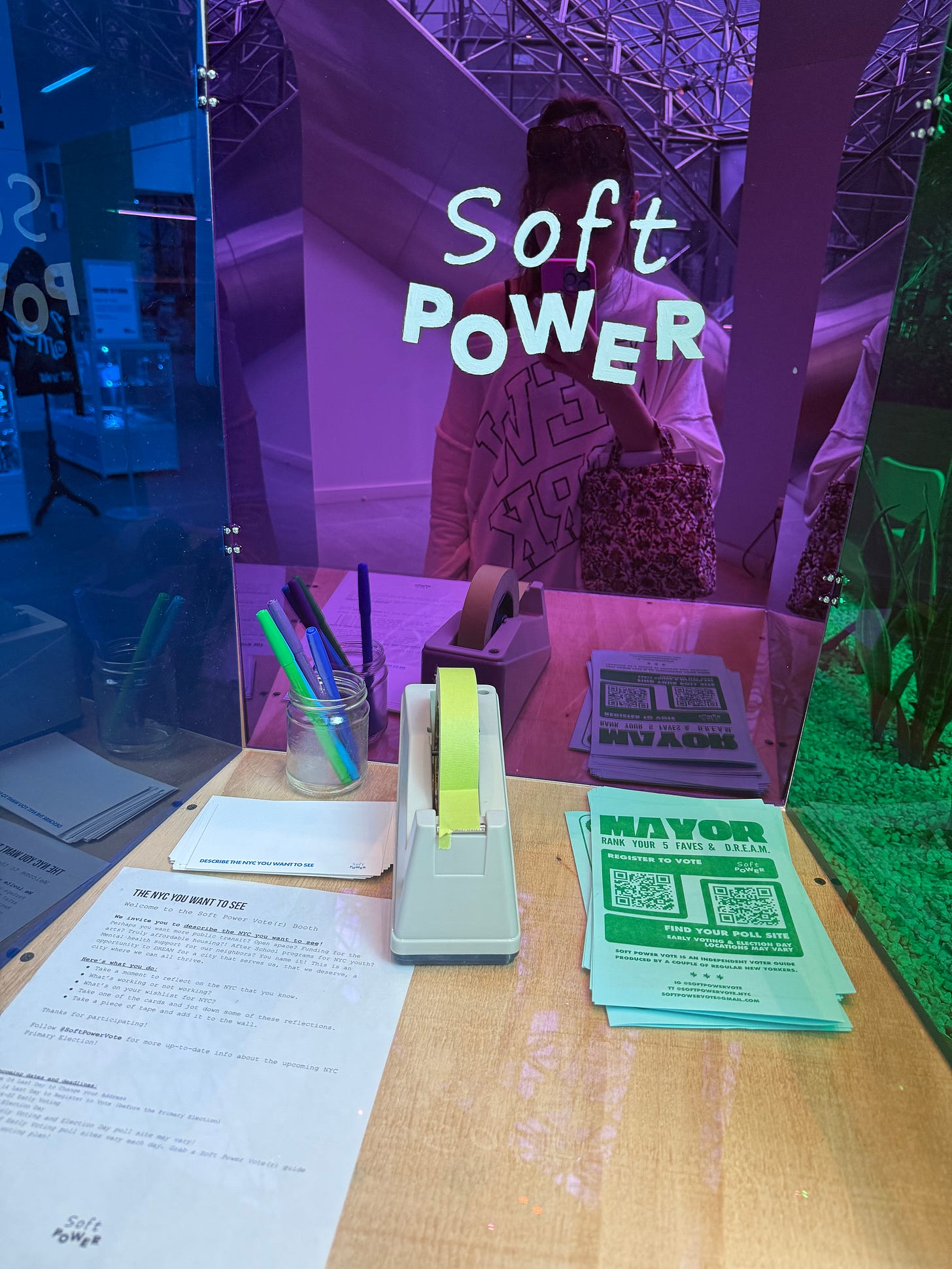

Read my feature on Rithm by Tina Tarighian, one of NEW INC’s Year 11 cohort members.
Elsewhere online
AI has already come for fragrance. Startup Osmo is hoping to “disrupt the fragrance market with AI-powered scent creation.” — Arabelle Sicardi, The Verge
“Perfume’s origins lie far from data centers. … Natural materials must be harvested, aged, blended. AI compounding labs like Osmo can ship a custom sample within two days. That frictionless speed, while exciting, risks further detachment from the raw, physical world beauty emerges from,” Sicardi writes.
Original Blue’s Clues host Steve Burns is starting a podcast. “‘Alive with Steve Burns’ is a video podcast about the big questions—identity, mortality, masculinity, loneliness, success—and what it means to stay human in a complicated world.”
Mind Candy, the company behind Moshi Monsters, is crowdfunding on Kickstarter to bring back the game. The original game, which started in 2008, shut down in 2019 prior to Flash Player being discontinued.
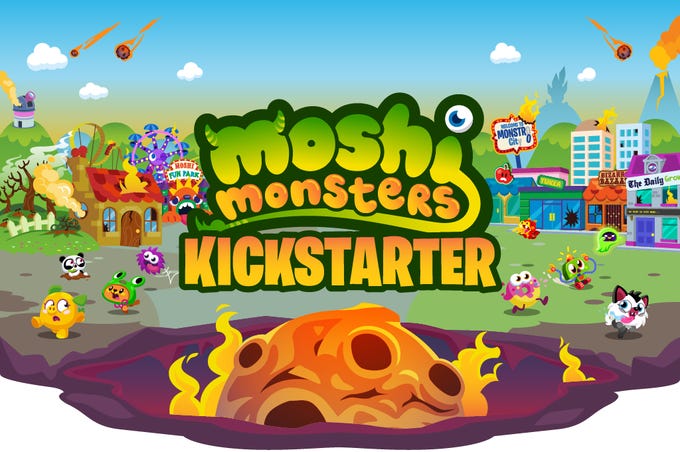
The early access version will be available on mobile and PC in July 2026. / Via Mind Candy This upcoming Monday is Open VCR Night at Wonderville. “Anyone may eject a tape at any time, but if you eject you must INSERT TAPE!”
The North American Bear Center celebrated the half-birthdays of its three ambassador bears on Friday. It had people vote on which piñata each bear would receive.









